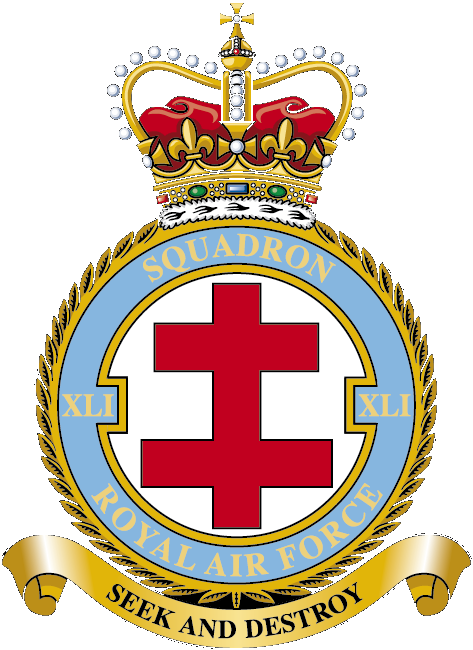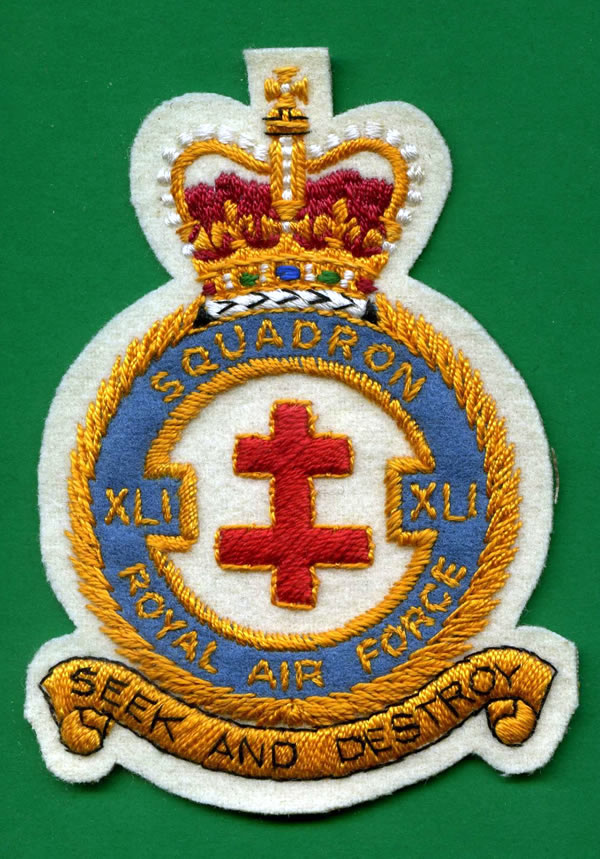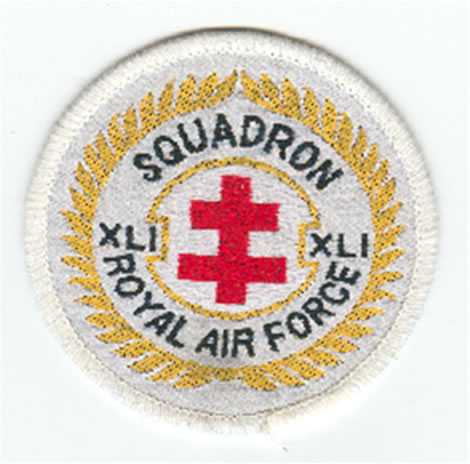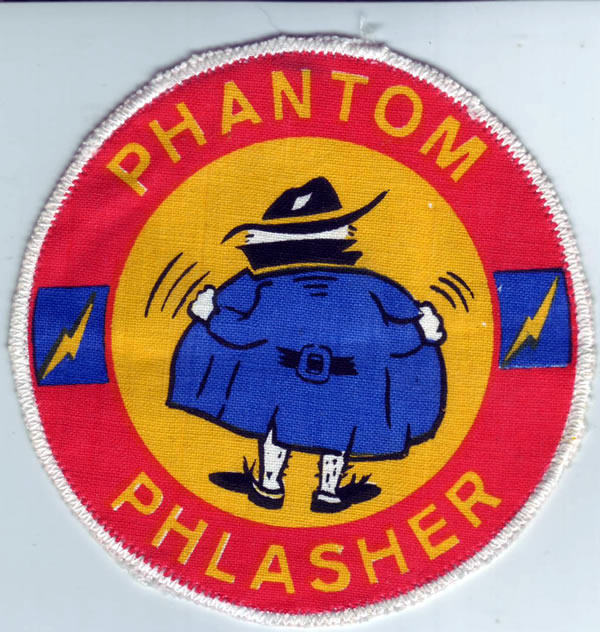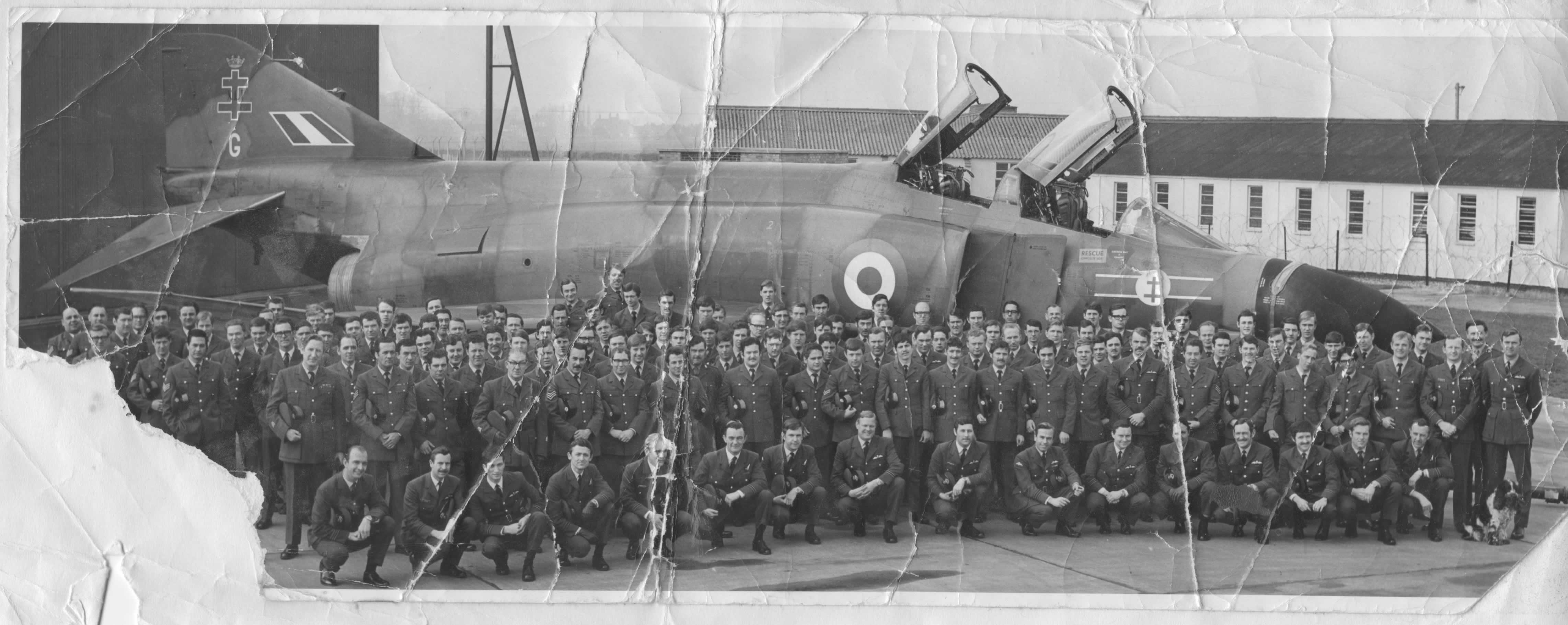XLI Squadron
RAF Coningsby
1 Apr 1972 - 31 Mar 1977
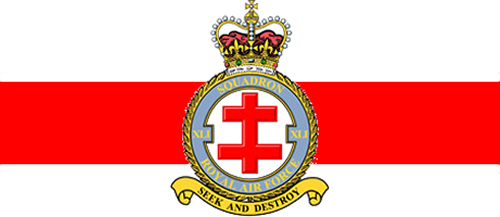
Number 41 Squadron was formed on 14 July 1916 at Gosport. Two months later, the unit moved to France equipped with FE8s, which proved unsuitable for their intended role as fighters and so were employed on ground attack missions. During 1917, the Squadron received SE5As for fighter and escort duties, although some ground attack missions were flown to great effect during the German offensive of 1918. Following the Armistice, the unit remained on the continent until February 1919 when it moved to Tangmere and was disbanded at the end of the year.
On 1 April 1923, No 41 Squadron reformed at Northolt as a fighter squadron, initially equipped with Snipes, these were replaced a year later by Siskins. During the Abyssinian crisis of 1935-36, the Squadron found itself in Aden on air-policing duties with two-seat Demons before returning the UK and re-equipping with Furys. In January 1939, No 41 received its first Spitfires - an association that was, remarkably, to last for the whole of World War II. Activity was light for the Squadron until May 1940 when it was used to provide fighter cover for the evacuation of Dunkirk and was part of No 11 Group during the Battle of Britain. In the following years, No 41 was employed on a variety of missions including convoy patrol, 'Rhubarb' interdiction flights and fighter interception. After joining the Second Tactical Air Force in September 1944, the Squadron flew fighter sweeps over the continent, moving to Germany as part of the occupation forces in July 1945.
In 1947, the unit spent 10 months as an instrument flying training unit, before reverting to its fighter role and receiving Hornets. The Squadron's first jet aircraft, the Meteor, arrived during 1951, and these remained until 1955 when Hunters took over. In 1958, the arrival of all-weather Javelins saw the unit based in East Anglia until disbandment in December 1963. September 1965 saw the Squadron reformed as a Bloodhound surface-to-air missile unit at West Raynham. Changes to the Bloodhound squadrons saw No 41 disbanded in September 1970, but on 1 April 1972, the Squadron reformed at Coningsby equipped with Phantoms. In 1976, a shadow squadron was formed at RAF Coltishall, flying the Sepecat Jaguar GR1, which then took over the squadron role. The Gulf War in 1991 saw the Squadron in action once again, followed by NATO/UN Operations over Bosnia, when it became the first RAF aircraft to drop a bomb in anger over Europe since 1945. On 1 April 2006, the Squadron took on Reserve status, with the standard being handed to the Fast Jet and Weapons Operational Evaluation Unit (FJWOEU).
41 Squadron was once again based at RAF Coningsby. The FJWOEU formed on 1 April 2004 by the merger of the Strike Attack OEU (SAOEU) from RAF Boscombe Down, the F3 OEU from RAF Coningsby and the Air Guided Weapons OEU (AGWOEU) from RAF Valley. The SAOEU formed, in 1983, as the Tornado OEU when a need for Service assessment of the GR1 Terrain Following Radar and weapon system effectiveness under tactical conditions was required. The Unit quickly proved its worth and was expanded five years later to include the Harrier II. Following its major avionics upgrade, the Jaguar GR3 joined the Unit in 1996. The F3 OEU formed in 1987 to develop tactics and doctrine for the employment of the Tornado F3 under operational conditions. AGWOEU, was formed to develop new technologies in the field of guided missiles. It was responsible for assisting with development of Air-to-Air missiles and providing technical and tactical advice to Strike Command squadrons, regarding missile firings.
As well as the development of operational tactics, the role of the FJWOEU is the evaluation of avionics and weapons such as ASRAAM, Brimstone and Storm Shadow, MBDA's precision attack stand-off missile that successfully saw operational service in Operation TELIC. The Unit's tasks are carried out in close liaison with Defence manufacturers, research institutions and front-line squadrons. 41(R) Sqn, FJWOEU is an arm of the Air Warfare Centre, whose motto is ' to test the weaponry and give advice'.
On 1 April 2010, the Boscombe Down-based Fast Jet Test Squadron (FJTS) was amalgamated into 41(R) Squadron to create a new entity, 41 Squadron Test and Evaluation Squadron, or "41(R) TES", in which form it continues today

 No. 228 OCU
No. 228 OCU No 6 Sqn
No 6 Sqn No 54 Sqn
No 54 Sqn XLI Sqn
XLI Sqn II(AC) Sqn
II(AC) Sqn No 14 Sqn
No 14 Sqn No 17 Sqn
No 17 Sqn No 31 Sqn
No 31 Sqn No 64(R) Sqn
No 64(R) Sqn No 43(F) Sqn
No 43(F) Sqn No 111(F) Sqn
No 111(F) Sqn No 29(F) Sqn
No 29(F) Sqn No 23(F) Sqn
No 23(F) Sqn No 56(F) Sqn
No 56(F) Sqn No 74(F) Sqn
No 74(F) Sqn No 19(F) Sqn
No 19(F) Sqn No 92(East India) Sqn
No 92(East India) Sqn No 23(F) Sqn
No 23(F) Sqn 1435 Flt
1435 Flt RAF Coningsby
RAF Coningsby RAF Bruggan
RAF Bruggan RAF Laarbruch
RAF Laarbruch RAF Leuchars
RAF Leuchars RAF Wattisham
RAF Wattisham RAF Wildenrath
RAF Wildenrath RAF Stanley
RAF Stanley RAF Mount Pleasant
RAF Mount Pleasant